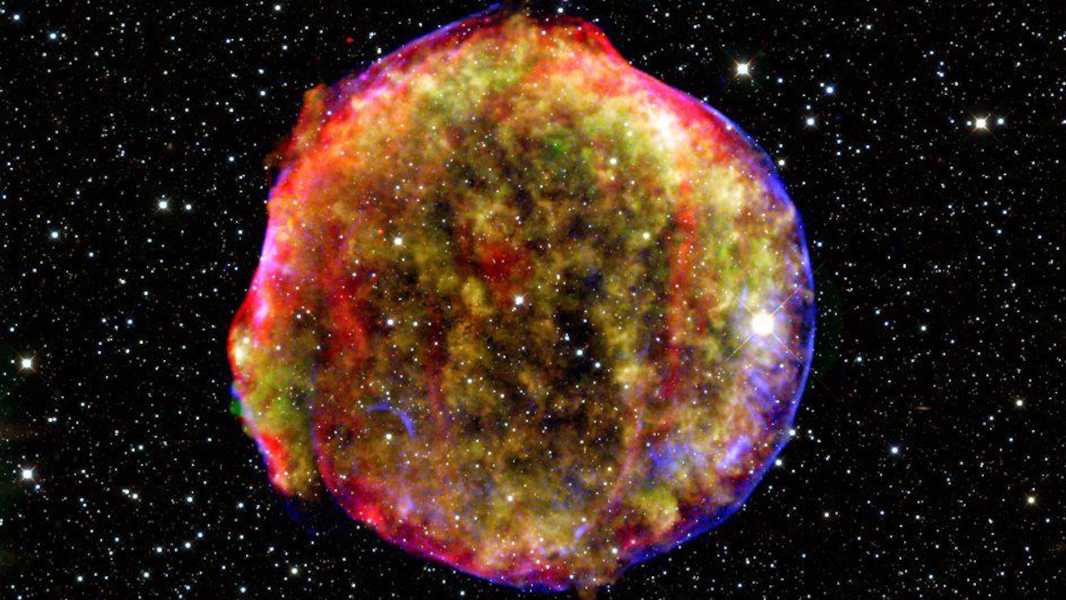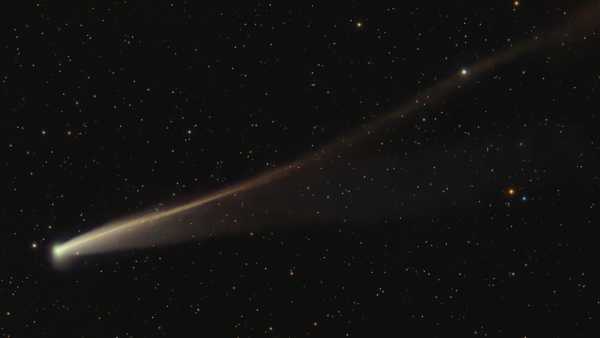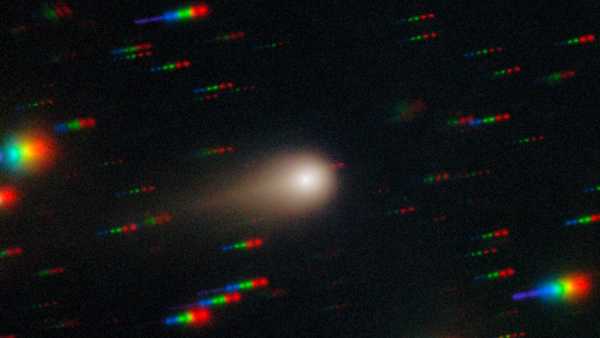
A new study suggests that Tycho, one of the most studied supernova remnants, may have briefly functioned as the most powerful collider in the universe. (Credit: MPIA/NASA/Calar Alto Observatory)
New research suggests that supernovae could become some of the most powerful particle colliders in the cosmos, but only if they interact with huge volumes of gas before exploding.
For nearly a century, astronomers have been detecting high-energy particles coming from deep within the universe. These particles, known as cosmic rays, are mostly made up of protons and sometimes nuclei of heavier elements. Most cosmic rays are deflected by the Earth's magnetic field or absorbed in the upper atmosphere, but some reach the surface. About once a second, a cosmic ray collides with your body.
Cosmic rays span a wide range of energies, the most powerful of which exceed one petaelectronvolt (PeV). This corresponds to one quadrillion electronvolts, or a thousand times the collision energies of the Large Hadron Collider, the world's most powerful atomic accelerator.
You may like
Sourse: www.livescience.com





